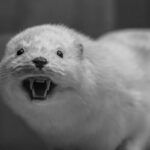The Theory of Evolution, a cornerstone of modern biology, provides a comprehensive explanation for the diversity and interconnectedness of life on Earth. It posits that all life forms have descended from a common ancestor, undergoing gradual changes over long periods due to natural selection. However, like all scientific theories, it is not without its limitations and unanswered questions. Recognizing these limitations is not a rejection of the theory but an essential part of the scientific process, paving the way for further research and refinement of our understanding.
Understanding DNA and Its Role in Evolution
DNA, the molecule that carries the genetic instructions for life, plays a pivotal role in the theory of evolution. It is through changes in DNA—mutations—that new traits can arise, potentially giving an organism a survival advantage and thus being passed on to future generations. However, the origin of DNA itself remains a mystery, a puzzle yet to be solved by evolutionary theory.
The Mystery of DNA’s Origin: An Unanswered Question in Evolution
The origin of DNA is a complex problem that has yet to be fully addressed by the theory of evolution. While it is clear that DNA is a product of a long evolutionary process, the initial steps that led to its formation remain elusive. This is known as the “chicken-and-egg” problem: DNA is required to make proteins, but proteins are needed to replicate DNA. This conundrum poses a significant challenge to the theory of evolution, as it is unclear how this cycle could have initiated.
How this Limitation Challenges the Theory of Evolution
The unresolved question of DNA’s origin does not invalidate the theory of evolution, but it does highlight a significant gap in our understanding. It underscores the need for further research and perhaps even new theories to explain how life’s essential building blocks came into existence.
The Irreducible Complexity of the Cell: A Hurdle for Darwin’s Theory
The concept of irreducible complexity—the idea that certain biological systems are too complex to have evolved from simpler precursors—poses another challenge to the theory of evolution.
The Cell: A Case Study of Irreducible Complexity
Take the cell, for instance. It is a marvel of complexity, with numerous components working together in harmony. According to the concept of irreducible complexity, these components are all necessary for the cell’s function—remove one, and the cell fails. This raises the question: how could such a complex system have evolved gradually, piece by piece, as the theory of evolution suggests?
Implications of Irreducible Complexity for the Theory of Evolution
While the concept of irreducible complexity is controversial and not universally accepted, it does highlight potential limitations in the theory of evolution’s ability to explain the origins of complex biological systems. This does not mean that these systems did not evolve, but rather that our current understanding of how they evolved is incomplete.
The Paucity of Transitional Species: A Gap in the Fossil Record
Another criticism of the theory of evolution centers on the fossil record. According to the theory, we should see numerous transitional species—organisms that represent intermediate stages in the evolution of one species into another.
The Importance of Transitional Species in Evolution
Transitional species are crucial to the theory of evolution. They provide the “missing links” that connect different species and show how they evolved over time. Without these links, the path of evolution is harder to trace.
The Scarcity of Transitional Fossils: A Problem for Evolution
However, the fossil record is not as complete as we would like. While there are some well-known examples of transitional fossils, such as the bird-like dinosaur Archaeopteryx, they are relatively rare. This scarcity of transitional fossils—known as “gaps in the fossil record”—is often cited as a problem for the theory of evolution.
How the Lack of Transitional Species Undermines the Theory of Evolution
The lack of transitional fossils does not disprove the theory of evolution, but it does highlight a limitation in our current evidence. It is possible that many transitional species simply did not fossilize well, or that we have not yet discovered their fossils. Nonetheless, this gap in the fossil record is a significant challenge that needs to be addressed.
Other Notable Criticisms of the Theory of Evolution
In addition to the challenges mentioned above, there are other criticisms of the theory of evolution that deserve mention.
The Problem of Convergent Evolution
Convergent evolution, where different species independently evolve similar traits, poses a challenge to the theory of evolution. It raises the question of how such similar traits could evolve independently in different lineages.
The Challenge of Explaining Symbiotic Relationships
Symbiotic relationships, where two species mutually benefit from their interaction, also pose a challenge. It is unclear how such relationships could have evolved gradually, as both species seem to depend on each other from the outset.
The Difficulty of Accounting for Human Consciousness
Finally, the emergence of human consciousness—our ability to think, feel, and be aware of ourselves and our surroundings—is a profound mystery. While the theory of evolution can explain the physical evolution of the human brain, it struggles to account for the emergence of consciousness, a phenomenon that seems to transcend the physical.
The Impact of these Flaws on the Acceptance of the Theory of Evolution
Despite these challenges, the theory of evolution remains the best scientific explanation we have for the diversity and complexity of life on Earth. It is widely accepted in the scientific community, and its principles are used to guide research in a variety of fields.
The Current Status of the Theory of Evolution in the Scientific Community
In the scientific community, the theory of evolution is not just accepted—it is considered a cornerstone of modern biology. Despite its limitations and the questions it leaves unanswered, it provides a powerful framework for understanding the natural world.
Public Perception and Understanding of the Theory of Evolution
Public understanding of the theory of evolution, however, is another matter. Misconceptions abound, and acceptance of the theory varies widely. Some reject the theory outright, often due to religious beliefs, while others accept it but misunderstand its principles.
The Predicted Paradigm Shift: Moving Away from Evolution
While the theory of evolution remains the dominant paradigm in biology, some scientists predict a paradigm shift—a fundamental change in the way we understand life and its origins.
The Need for an Alternative Explanation
The limitations and unanswered questions of the theory of evolution highlight the need for alternative explanations. These could come in the form of refinements to the existing theory, or entirely new theories that better explain the evidence.
Potential Alternative Theories and Explanitions
Several alternative theories have been proposed, ranging from intelligent design to panspermia—the idea that life on Earth was seeded by extraterrestrial organisms. While these theories are controversial and not widely accepted, they represent attempts to address the limitations of the theory of evolution.
The Future of Evolutionary Studies
Regardless of whether a paradigm shift occurs, the future of evolutionary studies is sure to be exciting. As we continue to probe the mysteries of life and its origins, we can expect to uncover new insights and deepen our understanding of the natural world.
Recap
Recap, while the theory of evolution has its flaws, it remains the best scientific explanation we have for the diversity and complexity of life on Earth. These flaws do not invalidate the theory, but rather highlight areas where further research is needed. As we continue to explore these questions, we can look forward to new discoveries and a deeper understanding of the natural world.
Frequently Asked Questions
Does the theory of evolution explain the origin of life?
No, the theory of evolution explains how life changes and diversifies over time, but it does not explain how life originated in the first place.
What is irreducible complexity, and how does it challenge the theory of evolution?
Irreducible complexity is the idea that certain biological systems are too complex to have evolved from simpler precursors. It challenges the theory of evolution by suggesting that these systems could not have evolved gradually, piece by piece.
Why are transitional fossils important for the theory of evolution?
Transitional fossils provide the “missing links” that connect different species and show how they evolved over time. Without these links, the path of evolution is harder to trace.
What is convergent evolution, and why is it a problem for the theory of evolution?
Convergent evolution is when different species independently evolve similar traits. It poses a challenge to the theory of evolution because it raises the question of how such similar traits could evolve independently in different lineages.
How does the theory of evolution account for human consciousness?
The theory of evolution can explain the physical evolution of the human brain, but it struggles to account for the emergence of consciousness, a phenomenon that seems to transcend the physical.
What are some potential alternatives to the theory of evolution?
Several alternative theories have been proposed, including intelligent design and panspermia. However, these theories are controversial and not widely accepted.
References
- Darwin, C. (1859). On the Origin of Species. John Murray.
- Behe, M. J. (1996). Darwin’s Black Box: The Biochemical Challenge to Evolution. Free Press.
- Gould, S. J. (2002). The Structure of Evolutionary Theory. Belknap Press.
- Dawkins, R. (1976). The Selfish Gene. Oxford University Press.
- Dennett, D. C. (1995). Darwin’s Dangerous Idea: Evolution and the Meanings of Life. Simon & Schuster.







